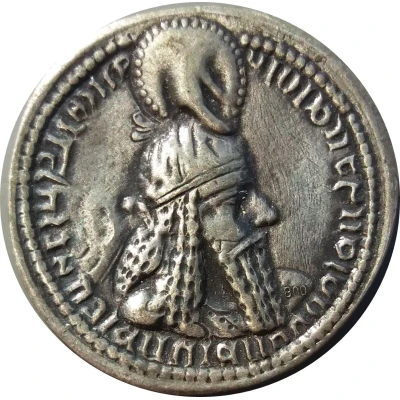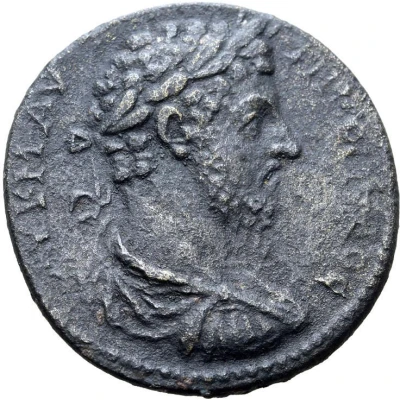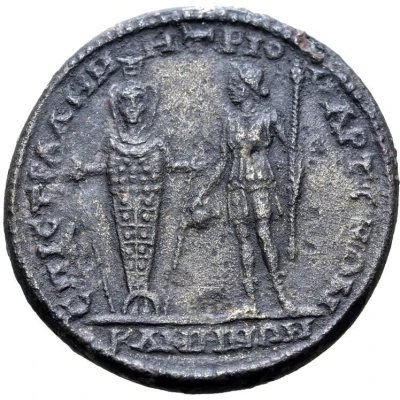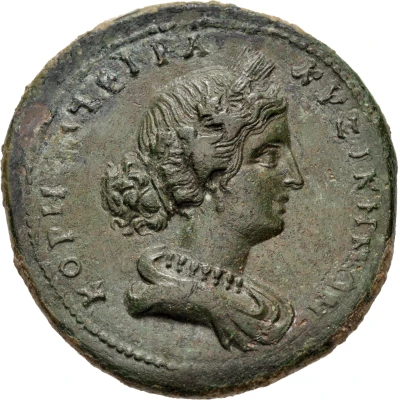
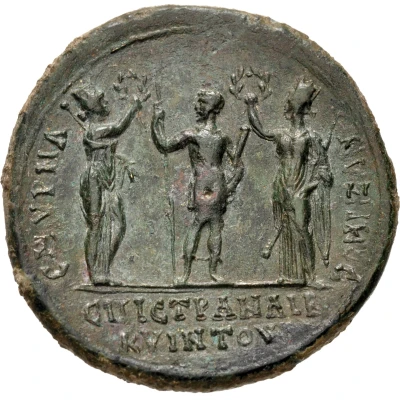

© Classical Numismatic Group, Inc.
Medallion - Time of Commodus Homonoia with Smyrna
| Bronze | 35 g | 43 mm |
| Location | Cyzicus (Conventus of Cyzicus) |
|---|---|
| Issuing entity | Naiv. Quintos Maximos (strategos) |
| Type | Commemorative medals › Personality medals |
| Years | 180-182 |
| Composition | Bronze |
| Weight | 35 g |
| Diameter | 43 mm |
| Shape | Round (irregular) |
| Technique | Hammered |
| Demonetized | Yes |
| Updated | 2024-11-12 |
| Numista | N#372473 |
|---|---|
| Rarity index | 100% |
Reverse
Emperor Commodus in the centre, bearded, standing, looking left, wearing military attire, holding spear and parazonium (long triangular dagger). Goddess Tyche of Smyrna wearing mural crown standing to the left, facing right, holding wreath. Personification of Cyzicus standing to the right, facing left, holding sceptre and wreath.
Script: Greek
Lettering:
CΜVΡΝΑ ΚVΖΙΚΟC
ƐΠΙ CΤΡΑ ΝΑΙΒ
ΚVΙΝΤΟΥ
Comment
Obverse head sometimes assimilated to Empress Faustina the Younger, wife of Emperor Marcus Aurelius.The homonoia between two cities of the Greek world was the proclamation of an "agreement" or commonality of interests, almost like the "sister-city" arrangements between modern cities. While the Leagues of Greek cities were primarily military alliances, a homonoia was a union based on political, economic and religious connections. The cities of Asia Minor preserved this tradition under the Romans, with an extensive interlinked system of alliances. The earliest coins marking these agreements appear under Domitian, but the majority come later, dating from the Severan period through the end of provincial coinage in the late 3rd century AD.
